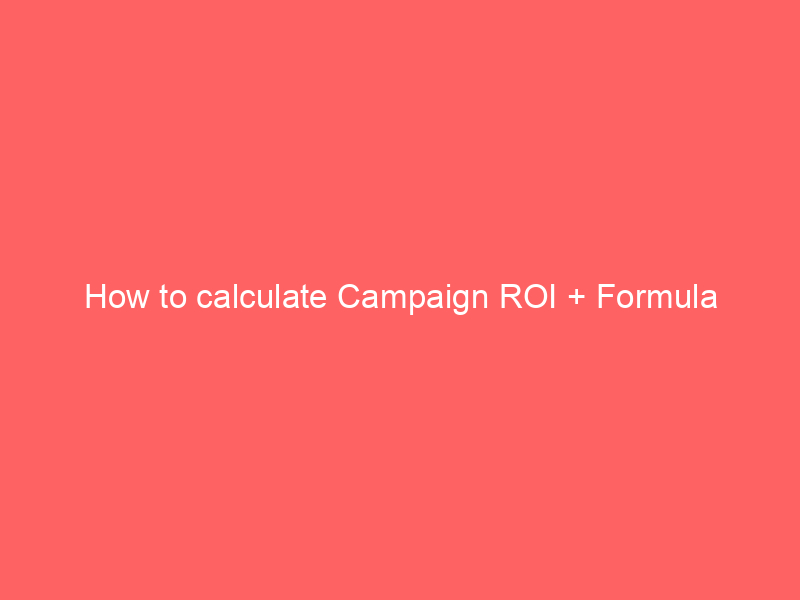Do you ever wonder if your marketing efforts are paying off? Understanding how to calculate your Campaign ROI (Return on Investment) is crucial for evaluating the performance of your marketing campaigns. By knowing how to calculate this key metric, you can make informed decisions on where to allocate your budget for maximum impact.
Understanding the Core Concept
Campaign ROI is a measure used to evaluate the efficiency and profitability of a marketing campaign. It helps you determine how much revenue you generated compared to the overall cost of running the campaign.
Formula
Real-World Example
Let’s say you invested $1000 in a marketing campaign that generated $5000 in revenue. Plugging these values into the formula: Campaign ROI = ($5000 – $1000) / $1000 = 4 or 400%
“Measuring ROI can help you fine-tune your marketing efforts and maximize your returns.” – Marketing Expert
Real-World Applications
Understanding Campaign ROI allows you to identify successful campaigns that deliver a high return on investment. It helps you optimize your marketing strategies by reallocating resources from underperforming campaigns to those that yield the highest ROI.
Actionable Steps
- Track all relevant campaign expenses and revenue generated.
- Plug the numbers into the formula to calculate the ROI percentage.
- Analyze the results and adjust your marketing strategies accordingly.
Key Takeaways
- ROI helps you measure the effectiveness of your marketing campaigns.
- Calculating ROI allows you to make data-driven decisions for future campaigns.
- Optimizing your marketing efforts based on ROI can lead to increased profitability.
Related Terms
- Conversion Rate
- Customer Acquisition Cost
- Customer Lifetime Value
Common Mistakes to Avoid
- Overlooking certain costs in the calculation.
- Not tracking revenue accurately.
- Ignoring the long-term impact of campaigns on ROI.
Common Myths Debunked
- ROI is only relevant for large companies – False, businesses of all sizes can benefit from calculating ROI.
- ROI is a one-time calculation – False, ROI should be monitored and adjusted regularly.
- ROI calculation is complex – False, with the right tools, calculating ROI can be straightforward.
5+ FAQs
How often should I calculate my Campaign ROI?
It is recommended to calculate your Campaign ROI regularly, ideally after each campaign or marketing initiative.
Can ROI be negative?
Yes, if your campaign revenue is less than the cost incurred, your ROI will be negative, indicating a loss.
What factors should I consider when calculating ROI?
Consider all costs associated with the campaign, including advertising, labor, and overhead, along with the revenue generated.
Is ROI the only metric I should focus on?
While ROI is crucial, it should be used in conjunction with other performance metrics to get a comprehensive view of your marketing efforts.
How can I improve my Campaign ROI?
Focus on optimizing your campaigns by analyzing what works and what doesn’t, and reallocating resources accordingly to maximize ROI.
What if I have trouble calculating ROI?
Contact a marketing expert who can help you analyze your data and calculate your Campaign ROI accurately.
Are you ready to take your marketing campaigns to the next level? Contact us today, and we’ll show you how to calculate and optimize your Campaign ROI for maximum results. Reach out via email or phone on our website to get started!

